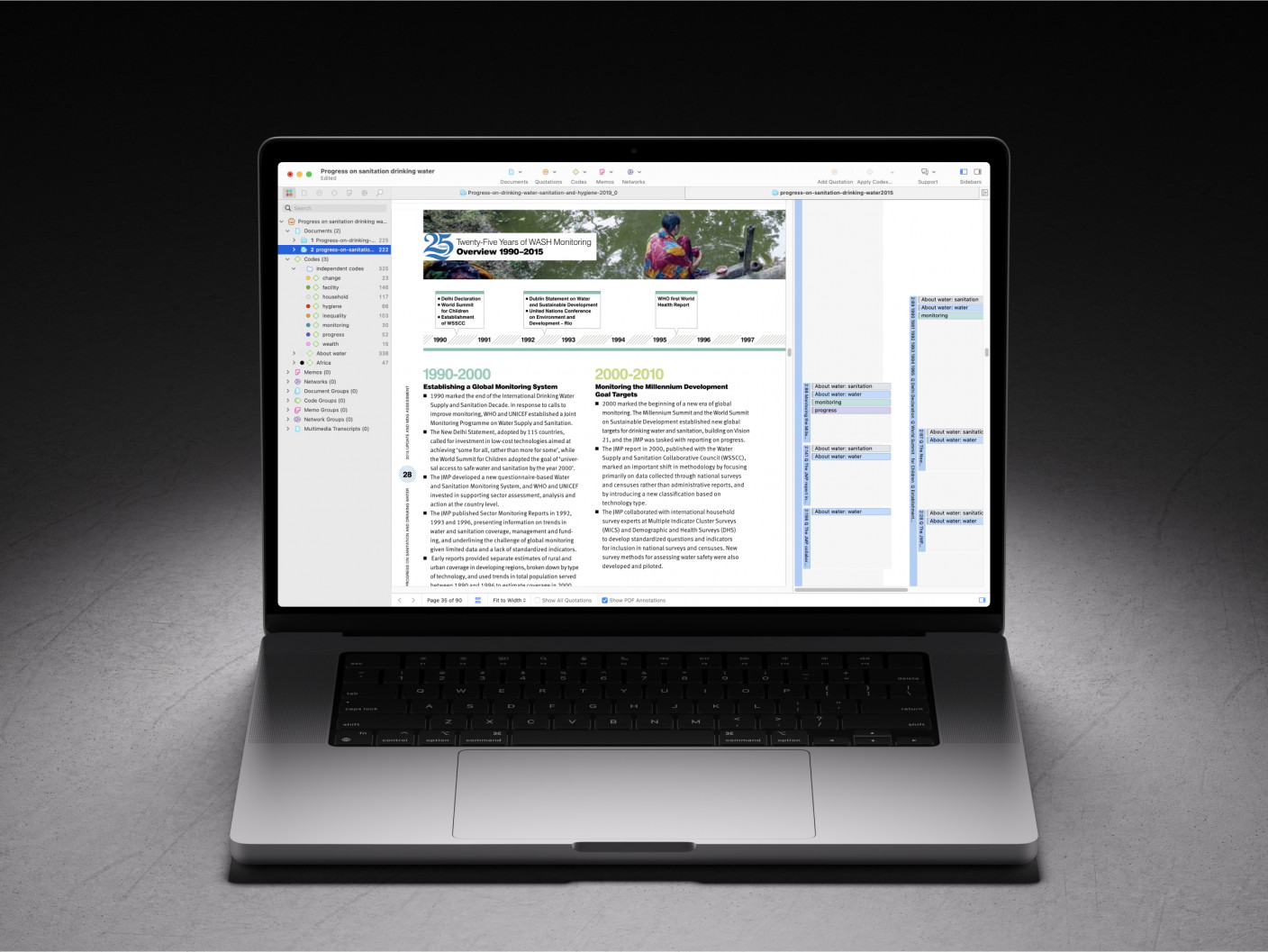Writing the Methodology Section | Steps, Techniques & Tips
- Introduction
- Why is the methods section necessary?
- How does the methods section affect other sections?
- Aspects of the methodology section
- Reporting different research methods
- Ethics in research methods
- Further reading
Introduction
The methods section can be a potentially overlooked part of a research paper, but its role is essential in establishing the transparency and credibility of the research findings. The research audience needs a clear understanding of the research methodology employed and the context and conditions in which the study is conducted in order to determine the rigor of the process that generated the core insights.
This article will outline the rationale for the methods section of a research paper, then detail the necessary aspects of a thorough description of the research methodology.

Why is the methods section necessary?
In many respects, how researchers arrive at the findings they generate can be more important than the findings themselves. Pepsi famously reported that people in their taste tests said they preferred their soda over Coca-Cola (CulinaryLore, 2021). The findings were surprising to many as Coca-Cola has long been the more popular soda of the two.
However, the results were less surprising when it became known that those participants were only given small amounts of both drinks. People such as Malcolm Gladwell (2005) have since speculated that consumer preferences would likely change if they were given larger quantities that are more typical of everyday consumption.
The research audience is expected to be critical or at least skeptical of the credibility of a research project without a description of the research process and the particular methods employed. Peer reviewers at a paper's target journal carefully scrutinize the detail in the methods section to ensure that the findings were generated in a rigorous manner that facilitates the development of scientific knowledge. Without a clear methods section or at least an understanding of the research methodology, the researcher is simply asking the audience to take the results at face value.
How does the methods section affect other sections?
It's easy to think of the methods section as just another part of a routine scientific paper, especially in the social sciences. That said, a robust description of the research methodology affects every other major aspect of a rigorous research paper.

Background information
The theoretical and contextual background information for the study helps to narrow the research aims, which in turn informs the methods employed. A robust literature review helps the researcher identify the gap in the current knowledge about the object of inquiry.
For example, a methodological gap in the literature identifies an underutilized research method or approach that would be worth pursuing in order to shed new light on the research topic. Previously published research reporting findings from interviews or surveys, for example, might illustrate perspectives that observational research or other methods can corroborate or contextualize.

Research question
The research question determines the quantitative and qualitative approaches that are appropriate for the study. Exploratory research questions usually call for qualitative research while confirmatory research questions tend to require quantitative research. Moreover, multiple research questions for the same study may necessitate a mixed methods approach.

Research findings
The data collection methods employed in a given study will determine how the findings are presented. Methods that collect countable data (e.g., closed survey questions, frequencies of codes in qualitative data) can provide findings that are usually presented in figures and tables. Important developments in interviews and observations will more often be presented as excerpts representing the key themes of the analysis.
Aspects of the methodology section
Research paper writing practices include a number of conventions based on the expectations of the research audience for a robust and rigorous study. There are variations among the social sciences in the requirements for a strong methods section, but researchers should consider all of the following aspects when writing their paper.
Methodological approach
A general description of the methodology usually lays the groundwork for what research methods will be employed in the study. Researchers use this section to make a statement about the research philosophy they use to justify the study. An interpretivist approach, for example, may call for a study involving interviews or focus groups. On the other hand, a constructivist or critical realist philosophy governing the study will warrant a study of observed behaviors through ethnography or other naturalistic inquiry.
The methodological approach should also align with the research problem and questions outlined in the background of the study. This part of the methods section explains how the research design aims to address the key inquiries, both on its own and in relation to other methodologies.

Research context
Research papers in the physical sciences or natural sciences typically describe the materials and environment that are being studied. A simple study on reactions between chemicals, for example, might list those chemicals, the amounts of those chemicals, and even the size and composition of the containers used in the study. The description of such a study can also include other factors such as the temperature and humidity of the room or the time of day when the experiment was conducted if those aspects are seen as potentially consequential to the understanding of the results.
The equivalent in the social sciences is the population, culture, or community in which the data collection occurs. However, the goal of understanding the object of inquiry in the hard sciences is to provide a pathway to reproducibility across studies, whereas in the social sciences, a description of the research context and its participants provides the necessary level of detail so the research audience can sufficiently interpret the findings and assess its contribution to existing scientific knowledge.
Describing the research context is a matter of outlining the features that are particular to that environment in a way that allows other researchers to familiarize themselves with the context. If the study is conducted in a classroom, educational researchers want to know various aspects such as the location of the school, the socioeconomic status of the students' families, and the performance of the school relative to other schools.

Research participants
The people directly observed for a research study might represent a larger group or culture, such as in survey research where a representative sample size of participants are asked for their perspectives. They can also be presented as a contrast to other cultures or communities. For example, if an existing theory has been developed from studies examining high school students, a new study might want to explore how that theory can be applied to university students or adult learners.
Besides age or education level, participants can be identified from any number of factors. Without providing any identifying information that might break confidentiality or breach privacy, the methods section should describe aspects of the participants that are relevant to the study. Describing the participants in the methods section helps the research audience understand that group or community being studied.

Positionality
Researcher positionality is an essential part of the methodology within naturalistic inquiry, as the researcher is the important instrument in the research process. While positionality and reflexivity are arguably key concepts in any qualitative research, they are especially important in ethnographic research or any research involving the researcher's active participation within the research context.
A positionality statement in a research paper should include aspects such as the researcher's identity, their connection to the research participants, their expertise or knowledge about the research context, and the extent of their rapport with participants during the course of the study. Note that there are no set requirements about what constitutes positionality. However, the researcher is expected to give sufficient detail about who they are relative to the research context so the research audience can adequately interpret the data and the resulting findings through the lens of those who collected and analyzed the data.

Data collection
Qualitative methods often include interviews, focus groups, and observations to collect data. However, there is no one prescriptive way to conduct an interview or an observation. The researcher is thus expected to describe how the data was collected, from the tools employed to the actions of the researcher employing the tools.
Even if existing data is used for the study, the methods section should describe the sources that were used and how those sources were found. A paper focusing on a literature review, for example, should describe the databases that were searched and what keywords were used to search for scholarly literature. Even little details such as the software used to collect and later analyze the literature can prove insightful as to the extent of care the researcher uses to conduct the study.
The tools employed to collect the data can provide useful insights for researchers interested in conducting similar studies. To conduct interview research, for example, does the researcher use a voice recorder, their own smartphone, or some other device to create the recording? Is the recording transcribed manually or with the help of an external service? When conducting ethnographic research, does the researcher write field notes by hand or use a voice recorder or laptop to document field observations?

Data analysis
Raw data always requires organization for researchers to make sense of its meaning and generate key interpretations. The analysis methods that are used to help the researcher understand the data determines the sort of results that are rendered from the study. Without the description of the analysis, there is no credible connection between the data and the findings for the benefit of the research audience.
Your choice of analytical strategy such as thematic analysis or grounded theory can generate findings in the form of a hierarchical codebook that presents key patterns within the data, while content analysis aims to determine the frequency of the data's most recurring words, phrases, or other phenomena.
Be sure to note what software tools were employed to analyze data. The coding of data and the analysis of those codes can be performed in qualitative data analysis software like ATLAS.ti, while statistical analysis can be performed in quantitative tools.

Reporting different research methods
There are varying conventions to reporting the processes typically involved in each of the qualitative approaches to research. Each particular method has its own unique considerations that are used to assess the rigor of the methodology.
Interviews
Researchers interview participants in a particular and intentional manner that is far different from a casual, everyday conversation. The research design should reflect the extent to which the researcher has considered how to interview research participants.
Interviews can be structured, semi-structured, or unstructured depending on the level of flexibility the interviewer has in asking follow-up questions and developing dialogue with the respondents. In cases of structured and semi-structured interviews, the methods section should list the questions that are predetermined in the research design and asked to the research participants.
Semi-structured and unstructured interviews have varying degrees of flexibility in exploring a respondent's answers more deeply when the opportunity for greater insights presents itself. The researcher should then use the methods section to detail the strategies undertaken when the interview isn't dependent on a scripted set of questions.

Surveys
Contemporary survey research regresses to a number of types of questions so the researcher can organize respondents into different categories for statistical analysis, when the methodology is predominantly quantitative. Closed questions involve multiple choice responses, checklists, and Likert scales to determine patterns among respondents. For example, a survey question about annual income level can provide several choices from which respondents can choose the range (e.g., $30,000-$50,000, $50,001-$80,000) that is most appropriate to them so researchers can determine the general socioeconomic status of the population under study. The methods section should describe what questions are posed to respondents, particularly which questions are most consequential to the study's findings.
Data collected from open-ended survey questions can be time-consuming to analyze but can yield the deepest insights. Researchers looking at the answers to these questions should detail how they coded or organized the responses and how they generated the resulting findings.
Quantitative researchers reading about survey studies expect to be given key values for statistical analysis such as sample size, response rate, confidence interval, confidence level, and standard deviation. These concepts are important to determine the extent to which the answers collected from a survey reflect the perspectives of the population it is studying.

Observations
Ethnography, action research, and other forms of research may rely on observations, where the data can take the form of field notes or recordings. With few exceptions, the observations are conducted by the researcher, which makes it important to detail how the researcher observes and engages with the research context and participants.
Researchers interested in observational research look for a variety of things in a methods section, such as the period of time in which the study was conducted, the number of hours actually used for data collection in the field, and the methods used to record any developments that are observed. In the case of field notes, the methods section is used to describe how field notes were recorded, particularly if the researcher has a system or format for field notes (e.g., observations recorded by time, people involved, actions observed).

Ethics in research methods
All research should be conducted in an ethical manner that is respectful toward research participants and their respective contexts. By extension, the research audience expects to know what ethical considerations were incorporated in the research design.

Access
In ethnographic research, the researcher often enters the research context they want to study as an outsider. Before observations are conducted in earnest, research participants are often wary about being observed by an unfamiliar researcher. Ethically gaining entry into the research context is its own research skill, and how the researcher exercises the skill ultimately informs the data collection process.
As a result, the research audience expects to know how the researcher gained access to the research context and how they developed rapport with the participants within the context. If it's a study observing a particular workplace, for example, then gaining access might involve talking with supervisors or managers to ensure permission to collect data on employees. After that, how does the researcher establish a level of comfort with research participants? The research audience often requires the methods section to address these considerations to determine the ethical care exercised while data is collected.

Informed consent
Human subjects research where primary data is collected will most likely require scrutiny from the researcher's institutional review board or ethics commitee. This ethics review almost always expects the researcher to obtain informed consent from research participants before any data is collected.
Some research papers will include the informed consent form as an appendix mentioned in the methods section. Regardless, researchers should explicitly detail how and under what conditions the research participants gave informed consent. Within research writing, the process of obtaining informed consent is more important than the details contained within the informed consent form itself.

Data anonymization
Any data that is not publicly available to the general public can contain personal details or other identifying information whose dissemination can be damaging to research participants. Ethics review committees thus often expect that any data excerpts that are made available for dissemination in papers or presentations be anonymized of any such information.
Interview transcripts, for example, contain codenames or pseudonyms instead of the real names of people or places. Excerpts of field notes from observations include only key details consequential to the development of scientific knowledge without giving away the identities of participants or their contexts. In both cases, the methods section should at least mention, if not describe in detail, what data anonymization processes were conducted.

Further reading
- CulinaryLore. (2021). Did Pepsi really beat Coke in taste tests? Retrieved November 26, 2024, from https://culinarylore.com/food-science%3Adid-pepsi-really-beat-coke-in-taste-tests/
- Gladwell, M. (2005). Blink: The power of thinking without thinking. Back Bay Books.





